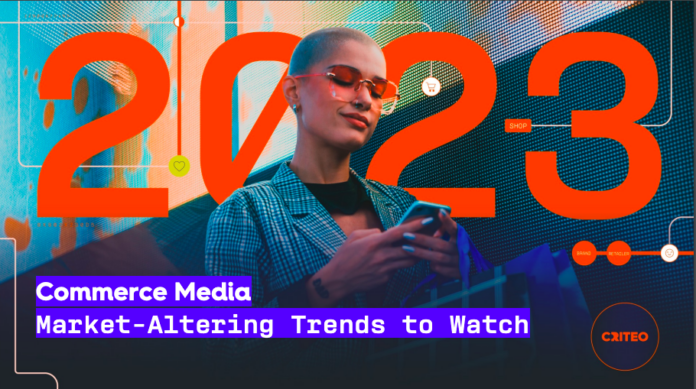Criteo identified 10 market trends that will shape the future of commerce media in 2023 while retailers acknowledge their role as media giants, and advertisers have more chances to reach customers at “shoppable” moments.
As millions of consumers shop online daily, retailers have become crucial players in the advertising landscape, providing an unprecedented opportunity for advertisers to reach customers wherever they shop.
“In this competitive landscape, there remain opportunities for retailers and advertisers to continue engaging customers while expanding their reach and it simply lies in their ability to identify and create shoppable moments,” said Taranjeet Singh, Criteo’s managing director of enterprise in Asia Pacific.
The first trend is that consumers couldn’t care less about channels. Consumers increasingly expect a seamless shopping experience, regardless of whether they are shopping online or in-store.
To differentiate themselves, retailers must integrate their digital and physical channels to create a frictionless shopping journey.
Second, retailer data is changing the programmatic paradigm. Retailers’ first-party data sets offer key advantages for advertisers, including first-party, closed-loop features that provide valuable insights into consumer behavior and preferences. These insights provided by retailer data are a reliable source of information for creating effective advertising campaigns.
Third, brand and performance are now one. Advertisers are investing more of their brand budget to retail media as it grows in popularity largely due to the fact that it offers advertisers highly targeted and engaged audiences, insightful data, and a seamless combination of advertising and commerce.
While brands have typically concentrated on the lowest portion of the funnel, they are now broadening their product offers to draw customers in earlier on in the purchasing process.
Fourth, a new breed of commerce expert is in demand with comprehensive campaign management becoming even more critical in 2023.
Agencies will move beyond platform reliance and focus on bridging the gap between retail and media with bilingual specialists known as commerce media experts. These experts will help clients navigate the new commerce models that streamline operations and distill outcomes.
Fifth, the massive media budget migration from traditional channels continues, with retailers offering new solutions and packages to support offsite advertising.
The need for ROI-driven spending and the shift towards more measurable channels means that media buyers must adapt and evolve their budget allocation strategies to remain competitive in a constantly evolving digital landscape.
Sixth, going offsite into the open web. By providing brands with closed-loop measurement and access to their unique audiences on the open web, retailers can open up new revenue opportunities.
There are limits to monetising digital assets on their own sites such as sponsored ads, display ads, and video, so expanding to offsite advertising allows for upper-funnel tactics without sacrificing lower-funnel metrics.
Seventh, ChatGPT is rewriting marketing and retail playbooks. Generative AI is set to transform the ad tech industry and will likely gain a permanent seat on the ad tech agenda due to its ability to provide a more personalised shopping experience.
Retailers and brands are expected to adopt retail-specific generative AI tools to optimize their ad campaigns and improve customer service. ChatGPT is one example of generative AI that has the potential to revolutionise the industry by streamlining workflows, enhancing customer service, and delivering more relevant results.
Eighth, Gen Z’s new spending power is changing commerce as they move beyond TikTok and become more established as adults with significant spending power, advertisers are seeking to tap into this conscientious consumer demographic.
In 2023, marketers will use a mix of tactics and platforms to more efficiently reach this cohort and tap into their values around sustainability, affordability, diversity, and inclusion.
Ninth, product SKU precision creates new outcome-based media. As consumers move from awareness to click in a few seconds, advertisers are looking for more granular targeting criteria to reach their desired audience. With the end support of third-party cookies, targeting based on SKUs and stores will become even more important.,
And tenth, sustainability in advertising. Adopting carbon-neutral campaigns, using net-zero emissions marketplaces, and leveraging attention-monitoring technology to optimise ad effectiveness are all examples of this.
Meanwhile, emerging enterprise climate platforms are connecting businesses with networks of vendors that help to clean up their operations. Sustainability is no longer an afterthought in advertising — it’s a key driver shaping the future of the industry.
















